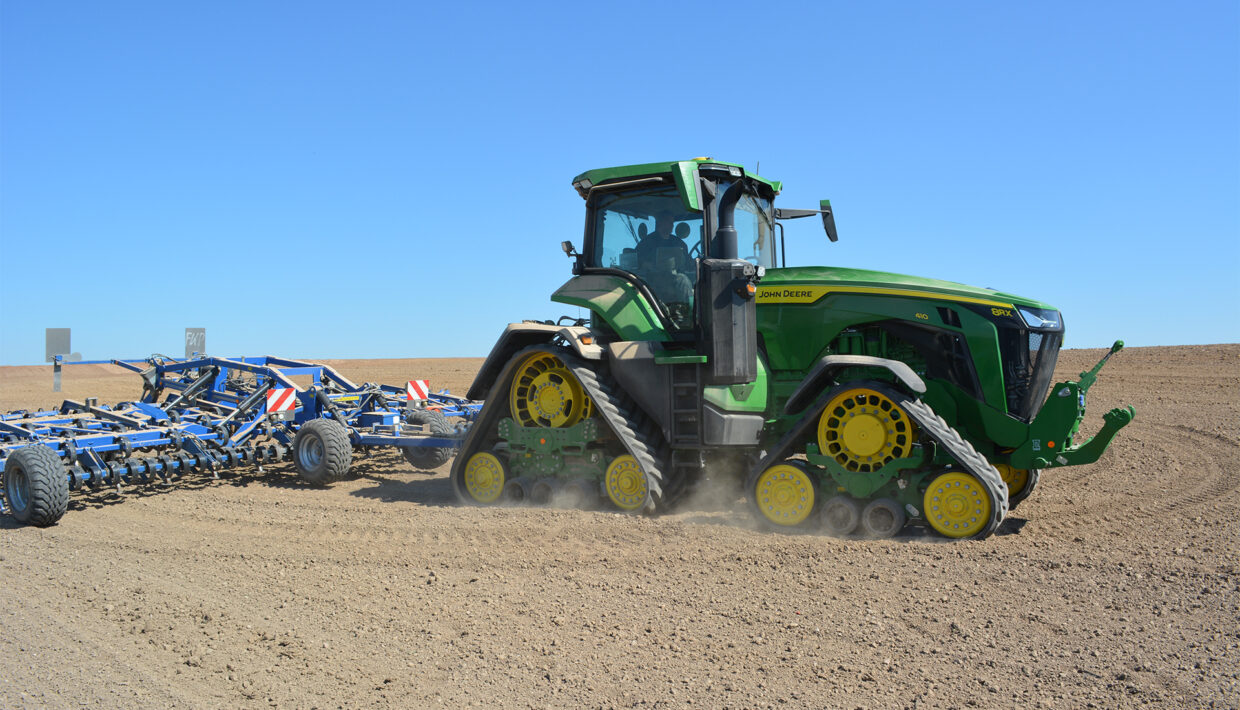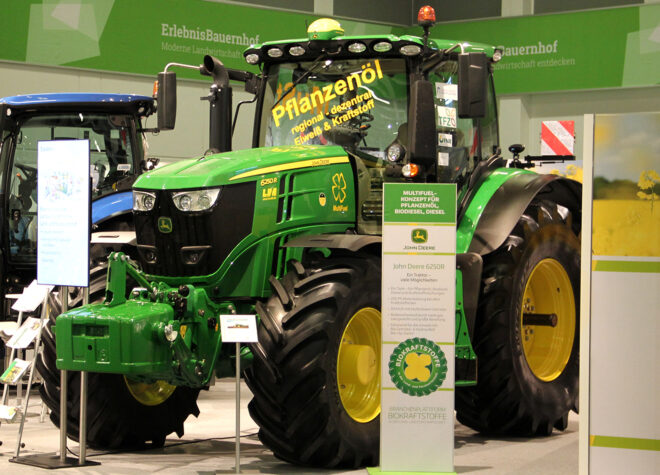Digitalisation is probably the biggest revolution in agriculture after mechanisation, and I am convinced that it will reconcile economy and ecology. Agriculture has a very special responsibility as a cause and problem solver of climate change. Practice, industry, and research must succeed in reducing greenhouse gas emissions. For this we have four mechanisms:
- Increasing machine efficiency
- Optimising agronomy – producing more with less
- Optimising the use of existing machine capacities (automation – autonomisation)
- Using renewable energy
Increasing machine efficiency
Since agricultural machines have been around, engineers have been working to make it more efficient. A lot has already been achieved here, but we have to stay realistic. A fuel consumption reduction of 1 to 3 % is a tremendous engineering achievement given the high effort required to reduce exhaust emissions. Essentially, it succeeds by reducing transmission losses, as we will see later in the example of the 8RX tracked tractor.

The efficient drive trains and the slip-reducing tracks of the John Deere 8RX help to save fuel and reduce CO2 emissions.
Optimising agronomy
In the overall CO2 balance of agriculture, fuel usage plays a secondary role. The potential is much greater in arable farming measures. The production of mineral fertilisers causes high emissions of CO2, while at the same time there is a surplus of organic fertilisers in some regions. So, if we can use resources more efficiently in this area and in this way produce more sustainably, we can significantly reduce our ecological footprint.
The goal must be, above all, to move from uniform area treatment to small-scale application, broken down according to soil variability. Here, I would like to refer again to the example of Industry 4.0, in which industry is replacing mass production with individual production. In agriculture, this will take place in the treatment of each individual crop: We consider each plant as an individual and care for it accordingly. The biggest challenge is to optimise fertiliser applications, crop protection and other measures based on data, experience, and analysis.

The John Deere Operations Center gives the user access to a wide range of site-specific data and information.
Full use of existing machine capacity
Let’s move on to the third lever; the better utilisation of machine capacities – in other words, a further minimisation of losses. Practical studies show that, especially in the case of combines, often only 60-70% of the installed power is utilised. Thanks to automation, however, we have made progress here in recent years. The automated combine sets-up itself and operates fully automatically.

The X9 combine harvester has many automated assistance systems that enable the driver to make full use of the installed machine capacity.
This brings us to the entry into autonomisation. According to Autonomy Level 3 of the passenger car standard, autonomous driving or operation means the machine operator can focus on tasks other than operating the machine for a longer period of time. The next Level 4 will be interesting if the shortage of qualified drivers continues to grow. The prerequisites for this, however, are a corresponding legal basis and the availability of 5G internet in rural areas.
Renewable energy
Let’s move on to the final, but very crucial, point about reducing greenhouse gases in agriculture: We will achieve this using alternative forms of energy. First of all, electrification.

John Deere Multifuel tractor at the Green Week in Berlin
Unlike in the passenger car sector, mid-range and high-end tractors with purely battery-electric drive will not be available in the next few years. Readiness for series production depends on the capacity of the batteries. Today, a 250hp tractor would have to carry a 10-ton battery to provide enough power for a full day’s heavy work – having about eight full load hours on board without recharging. However, the push for electrification in the passenger car and commercial vehicle sectors is likely to provide a boost to innovation. In addition, agriculture could become self-sufficient if electricity from its own biogas, wind power or solar plants is used to power farm machinery.
Unlike all-electric powertrains, a very rapid reduction in greenhouse gas emissions would be possible using alternative fuels. With so-called multi-fuel engines, tractors can run not only on diesel but also, for example, on biodiesel, rapeseed oil or other non-esterified vegetable oils. This allows CO2 emissions to be significantly reduced and breaks ties to fossil fuels – a benefit for the environment and the farmer’s budget. However, the political course would have to be set for this and incentives would have to be created for farmers.
Technological progress in agricultural engineering is making it possible to consider a combination of environmental protection and economic efficiency
Prof. Peter Pickel
Allow me to summarise: Technological progress in agricultural engineering is making it possible to consider a combination of environmental protection and economic efficiency. Agriculture can take responsibility for sustainable and environmentally friendly production and in this way ensure the trust of society. This makes environmental protection a competitive factor. The result: The optimisation of agriculture using high-performance digital technologies continues, and the pressures on farmers are transforming into a vibrant growth environment for the future.

